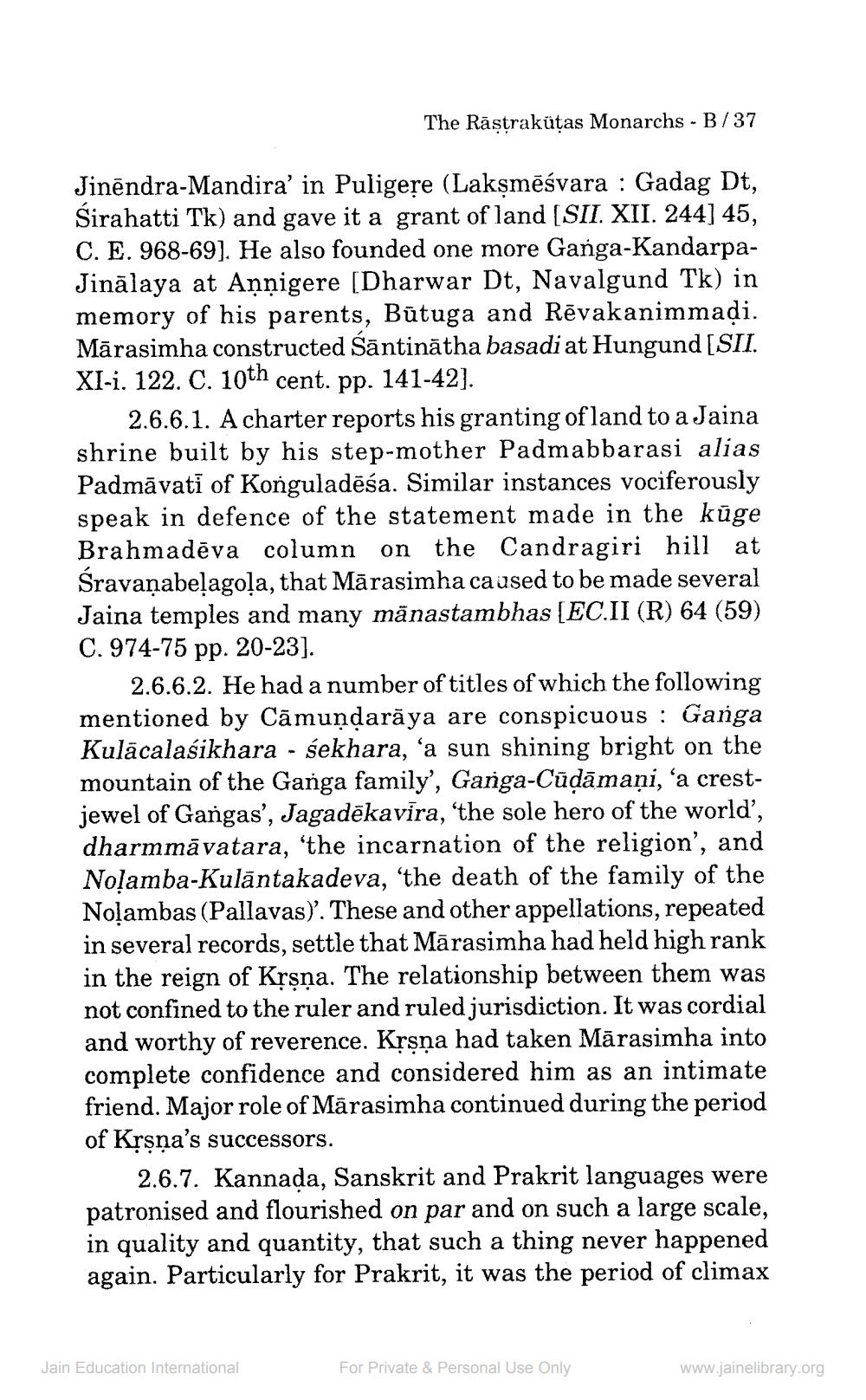________________
The Raṣṭraküṭas Monarchs - B/37
Jinendra-Mandira' in Puligere (Lakṣmēśvara Gadag Dt, Śirahatti Tk) and gave it a grant of land [SII. XII. 244] 45, C. E. 968-69]. He also founded one more Ganga-KandarpaJinalaya at Annigere [Dharwar Dt, Navalgund Tk) in memory of his parents, Būtuga and Rēvakanimmaḍi. Mārasimha constructed Santinatha basadi at Hungund [SII. XI-i. 122. C. 10th cent. pp. 141-42].
2.6.6.1. A charter reports his granting of land to a Jaina shrine built by his step-mother Padmabbarasi alias Padmavati of Konguladeśa. Similar instances vociferously speak in defence of the statement made in the kuge Brahmadēva column on the Candragiri hill at Śravanabelagola, that Mārasimha caused to be made several Jaina temples and many mānastambhas [EC.II (R) 64 (59) C. 974-75 pp. 20-23].
2.6.6.2. He had a number of titles of which the following mentioned by Camuṇḍarāya are conspicuous: Ganga Kulacalaśikhara - śekhara, ‘a sun shining bright on the mountain of the Ganga family', Ganga-Cūḍāmaņi, 'a crestjewel of Gangas', Jagadēkavira, 'the sole hero of the world', dharmmāvatara, 'the incarnation of the religion', and Nolamba-Kulantakadeva, 'the death of the family of the Nolambas (Pallavas)'. These and other appellations, repeated in several records, settle that Marasimha had held high rank in the reign of Kṛṣṇa. The relationship between them was not confined to the ruler and ruled jurisdiction. It was cordial and worthy of reverence. Kṛṣṇa had taken Mārasimha into complete confidence and considered him as an intimate friend. Major role of Marasimha continued during the period of Kṛṣṇa's successors.
2.6.7. Kannada, Sanskrit and Prakrit languages were patronised and flourished on par and on such a large scale, in quality and quantity, that such a thing never happened again. Particularly for Prakrit, it was the period of climax
Jain Education International
For Private & Personal Use Only
www.jainelibrary.org




